
Uncovering Tranquility with Meditation
Meditation is the basic, foundational, central technique of yoga practice. In recent decades meditation has become more widely recognised as being beneficial. Many studies have corroborated what the research scientists of the ancient tradition recognised millennia ago, and what practitioners have long known: meditation works and is well worth giving regular time to. Here are a few benefits of regular yogic meditation practice.
Ten Benefits of Meditation
HEALTH - WHOLENESS AND BALANCE
Meditation has great health benefits, no doubt about it. But what does health really mean? Is it not wholeness, integration, balance and harmony? This is the deeper quality of health that yogic meditation invites, a health that helps us apprehend the underlying truth of reality, recognise and remember ourselves.
CHANGING OUR MINDS AND BECOMING MORE OF OUR TRUE SELVES
LESS EFFORT AND MORE OUTPUT
Meditation increases efficiency. Old saying: ‘if you don’t have time to meditate one hour a day, you need to meditate two hours a day.’ One traditional way this is illustrated in the yoga tradition is by the archer. The arrow can only fly with power and precision towards its intended target when it is first drawn back away from that target. Similarly in life. When we regularly invite all our sense and action powers, all the instrumental powers of our awareness, to ‘draw back’ and come together, away from the distractions of the constantly changing and churning external world, we give them the chance to soak in and attune to the quality of balance and integration. From there, they and we are better prepared to navigate that external realm with more focus, integrity and efficiency.
MENTAL AND PSYCHIC HYGIENE AND EXPLORATION
MEDITATION HELPS US LIVE HERE AND NOW
As human beings, we have a capacity to spread ourselves thin, imagining and projecting into the future, reminiscing and holding on to the past. The meditative practice of focusing steadily on an object here and now can help train us to inhabit this moment, the only one we ever really have, more fully. This is one of the factors that helps explain why the person who sits still, apparently doing nothing, twice a day for 15-60 minutes, is able to get much more done than that same person who does not grant the miraculous, instrumental powers of our human, body-borne conscious vehicle that time to come together, recalibrate and integrate as best as possible in the current circumstances.
MEDITATION HELPS US REALISE OUR GOALS
Most things worth aspiring for in life require work: patient, steady work; sometimes thrilling and exciting, but also sometimes rather painstaking and laborious. The world around us continues to bombard us with lures of short term, instant gratification, but of varieties that offer barely even fleeting satisfaction. In such a ‘climate’ it is no surprise that levels of incompetence, anxiety and crises of identity are all rising. Meditation practices can help us build steadiness, patience and calm spaciousness, helping us in all types of active and purposeful endeavours.
SOVEREIGNTY AND AUTHENTICITY
GETTING TO KNOW OURSELVES MORE DEEPLY
MEDITATION IS CHALLENGING AND REWARDING
Meditation will challenge us. If we work with the challenge however, it can help make us much stronger, less suggestible and more self-reliant. Just being able to maintain concentrated awareness for a few minutes is something of an extraordinary feat for most of us these days. As we continue to practice, we can extend our capacities for concentration and focus and reap the benefits as we have more of ourselves to bring to bear on the challenges we will inevitably face in life.
MEDITATION CAN BRING US INTO CLOSER CONTACT WITH REALITY
It is true that meditation can be used as an escape, just like most techniques. However, if we practice with sincerity, it is pretty much guaranteed that the deepening quiet and calm at the surface levels of our psyche are going to allow us to see more deeply. A classic illustration in the tradition is of a lake. When the surface is rippled in the wind – when we are busy in the whirl of the day-to-day – we do not see much beyond the surface. If the wind stops completely though, the surface will get stiller and stiller, such that we can see much deeper. Perhaps all the way to the depths. However, what we almost always find is that even if we do get glimpses of the light that never goes out in the deep core of our existence, our view towards those depths is not unimpeded. Beneath the surface of the lake there is amassed a load of trash, wah! We need to clear that out. As we keep practising, tuning our instrument, cleaning our home, clearing up our vehicle, we notice that down there in the depths there is also a network of caves, some harbouring monsters. There are all sorts of things down there. The greater calm, steadiness, and recognition of the unchanging depths, however, fortifies us for the intimidating work of confronting what lurks within our own shadow. Paraphrasing Alexander Solzhenitsyn, the line of good and evil is drawn through every human heart. So often, in the busy, mediated world, are propagated the ideas that the ones to blame are ‘out there’, ‘over there’, anywhere but here. One of the reasons meditation tends to increase compassion is not just because it can bolster patience, but because it invites us into closer, more confidential relationship with ourselves. Regular practice grants us a close, confidential meeting with ourselves, regular enough that the things that we might prefer to keep hidden away in our shadow become less easy to ignore.
Another way of stating it is that when we practice inviting the medi-state, we are praying for and inviting peace. Yet this simultaneously means we are in a certain sense asking for trouble! Because we are asking to bring more clearly into our conscious awareness all those tendencies, woundings, fears, and desires that get in the way of our experiencing a sustainable peace so we can integrate and harmonise them. As we practice, we may see that tendencies, woundings, fears, and desires that reside in the shadowlands of our psyche often affect and sometimes infect our best intentions. We may realise that sometimes they are the real driving forces behind some of our behaviours that we have previously cloaked in guises of well-meaning motivation. The greater calm and clarity that skilfully applied meditation practice can invite will allow us to see what we previously perhaps subconsciously chose to stay blind to. At the same time, that calm steadiness will help empower us to do the work of integrating those shadows.

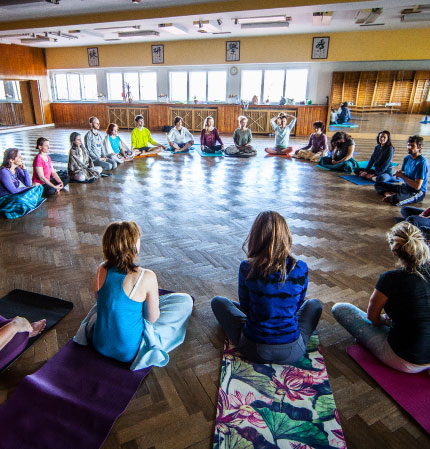
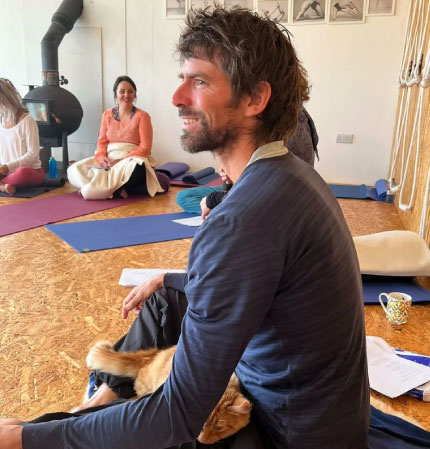

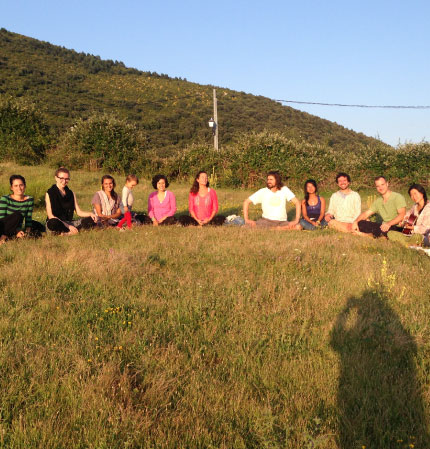

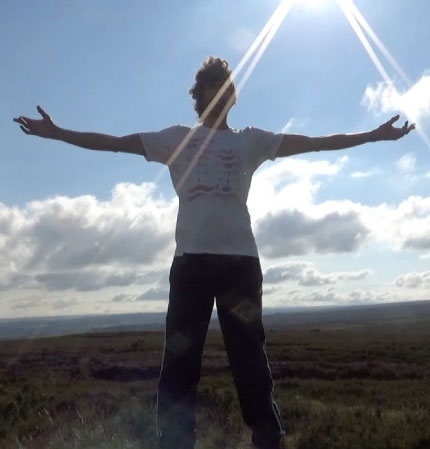
Frequently Asked Questions About Meditation
Where might I start?
One piece of advice I have heard from more than one real yoga teacher is ‘if you possibly can, contact a living tradition and get initiated in an authentic meditation technique.’ Well and good, but what if I have no access to a living tradition with which I feel an affinity, that my heart, mind and guts all say yes to? What if there are no living masters of millennia proven traditions in my neighbourhood? Should I wait?
Well, some might say yes, but I agree with what many teachers down the ages have said, that the desire for liberation is the most important factor in becoming liberated. If we want to meditate, let us do so. But let us be realistic and circumspect about how we begin and proceed. No need to get carried away with fancy techniques, no need to start trying to hover in the air, or fly through the sky. First, let’s just do the patient, steady work of beginning to apprehend more thoroughly the state of the field of our psyche, recognising that this is going to be a lifelong affair. No point rising from the meditation cushion if we have not first fathomed and risen again, integrated, from the depths of our woundings, our anger, sadness, resentments and grief. Ascension sounds alluring of course, but ‘rising’ is the easy part, the real practice is integrating our experience back into the grounded reality of our being.
If we have doubts, I advocate starting where Patañjali starts. In the Yoga Sūtra, when delineating the myriad options to cultivate meditative awareness, Patañjali first offers that we use as our support the movements and retentions of the life force in, through and out of our bodily vehicles. The breath is our constant companion. Without forcing anything, we can observe its subtle movements and attune to our deeper capacity for focus, concentration, and meditative awareness. Similarly, very safely, we can attune to the sensations of life force/prāṇa in and through our body.
Generally speaking, in more immersive programs, I include time for meditation twice daily. Participants can either work with their regular practice technique, or with simple guided meditations that work with breath and bodily sensation to help us deepen our capacity for sustained focus, concentrated awareness, and working from gross to subtle.
Here are some simple guided meditations:
What is the relationship between meditation, yoga, and clarity of awareness?
We might call this the medi-state.
Yoga also refers to the practice principles that can help cultivate this state.
As the defining texts of the yoga tradition make clear, yoga practice is really everything we do. It is a full time endeavour. The Yoga Sūtra describes yoga practice as an effort to foster steadiness, an effort that is long-term, uninterrupted, wholehearted and attended to with genuine presence and dedication, then it can become well rooted. (YS1.13-14) One thing this description tells us is that yoga practice is not really about techniques, rather it is everything we do, all the time.
We can know whether we are established in yoga by how we respond to the different situations life brings us. In the Yoga Sūtra, Patañjali gives an always and everywhere prescription of how to behave in four types of situation. When we’re in a good space, be open and friendly. When we meet suffering, be compassionate. When we see great, meritorious things, let it inspire us and fill us with joy. When we see terrible things, let it not rob us of our centre, but let us be steady and equanimous. As well as a prescription for how to practice, this is also a description of a person established in yoga. If we always and everywhere, spontaneously and reliably meet those four type of situations in those four ways, then we are likely estbalished in yoga. We are able to act from the medi-state: from a clear, steadily establised centre, a state of balance and harmony, in which we effortlessly express the wisdom of our consciences, unimpeded by conditioned ideas, and in which our actions are in rhythm with existence.
If we are not responding spontaneously in these ways, the yoga teachings suggest that we are making our lives more complicated than they could be, and that we are being dominated by our conditionings and subconcious patterns. In order to help us clarify the lenses of our awareness and come to greater integration, we can take recourse to regular meditation practice.
What is the basic method of yogic meditation?
Yogic meditation begins by turning our attention towards an object of support – an ālambana – around which we can gather all the powers of our awareness.
One way we might think of this object is as being a bit like a tuning fork for all the instruments in an orchesra to tune to. When they are all tuned in to the same key, they can play a beautiful movement. If though they are all tuned to different keys, however virtuoso the different instrumentalists, they will not access the same potential as the unified orchestra’s symphony, so much greater than the sum of its parts.
Similarly, when we take time to tune all the powerful instruments of our conscious awareness, to bring into balance, integration and harmony all our different intelligences, sense and action capacities, we can come into greater at-one-ment, and so experience more of the wholeness of who we are. Also, when we take this time to tune in, we can then go out into the world from a place of greater balance and integration and so act and respond to life with greater skilfulness and efficiency.
How do we practice? Working with an object of support.
Sometimes people think that in order to be able to meditate, we must first be able to access a calm, quiet mind. It is not quite like this. In the state of meditative absorption, we will taste moments of calm and serenity. And meditation practice may infuse our life with greater calm and equipoise. However, we can start wherever we are.
When we turn towards the object of support – the ālambana – we give the powers of our awareness something to focus on, to gather around, to orient towards. This point of orientation then serves to invite all the powers of our awareness to come into a more integrated, balanced and steady state.
There are many possible techniques and many objects that we might focus on. A good example is the movements of life force in and out of our body through the agency of the breath. As long as we are alive, this is always available.
If we take the easy, natural movement of the breath moving in and out of the body as our object of support, we turn our attention towards it, observing and allowing ourselves to notice, witness and experience. As we continue like this it is possible that the object falls away. We are no longer witnessing the object, but experiencing our pure witnessing consciousness. However, it is highly likely that our awareness does not always settle so easily on the object of support. Rather, we notice that thoughts come and go, carrying our awareness hither and thither. We may see that our attention is not so clear, or steadily focused, but is flitting around apparently all over the place. With practice though, we may notice that it is not quite ‘all over the place’, but that our awareness tends to flit around a fairly complex network of habitual spaces, fears and anxieties, fantasies and desires, the to do lists, reminiscences, regret, nostalgia, hunger, thirst and other bodily proclivities and so on.
Apprehending the state of our awareness.
Cultivating our capacity for steadiness.
How does meditation work?
Yogic meditation works with and harnesses our innate tendency to curiosity. We focus on a thing. We inquire into it. As we focus on it, with an attitude of curiosity and inquiry, we notice more. The object, as it were, opens up to us. This then further kindles our curiosity, such that we can enter a realm of subtler experience and perception. Subtler qualities of the object are revealed to us. For example, if we are focusing on the breath, we may notice subtler and subtler qualities or properties of the phenomenon of the body breathing, qualities so subtle that we would not be able to notice with our instrumental powers of awareness turned out towards the changing world.
When this subtle inquiry is sustained, we can become absorbed in it. The moment then becomes its own fullness. We are content. In such moments, we are fully present, there is no space for wanting to be elsewhere, or which could allow regret later. No, if only for a moment, we are fully here. And this brings with it a quality of blissfulness, a blissfulness that does not depend on the particular object. Rather, we experience this blissfulness as an emergent property of our concentrated awareness. Such experiences then start to reform our understanding of ourselves and our very sense of self. We recognise that the ‘address’ of this wholeness or blissfulness is not somewhere outside, but is within us.
As we practice yoga and repeatedly invite this process, we come more and more to recognise this innate wholeness. We attune more and more to that undying, eternal essence that underlies all our experience. Gradually then, this works to free us from the confusion and delusion of identifying with our tenuous bodily vehicle and clinging to our allegiances and preferences in an attempt to bolster our fragile sense of self, as we recognise more and more that really our Self is the great underlying support, the mighty ālambana of the underlying consciousness from which and within which all experience comes and is known.
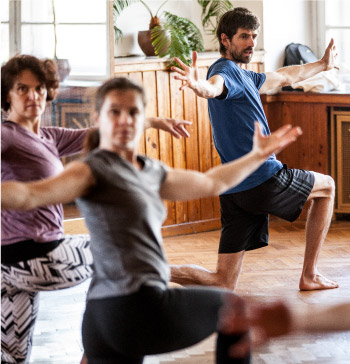
Programs
SIGN UP >
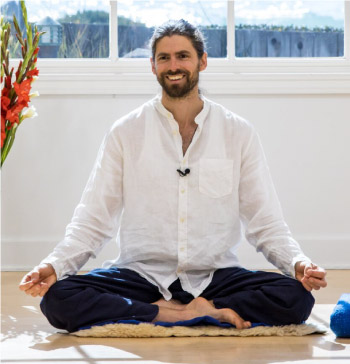
Work With James
LEARN MORE >

Store
COMING SOON
Whole Life Yoga Newsletter
The place to find out first about all James’ programs and offerings, receive articles, recommendations, and access special rates for programs.
